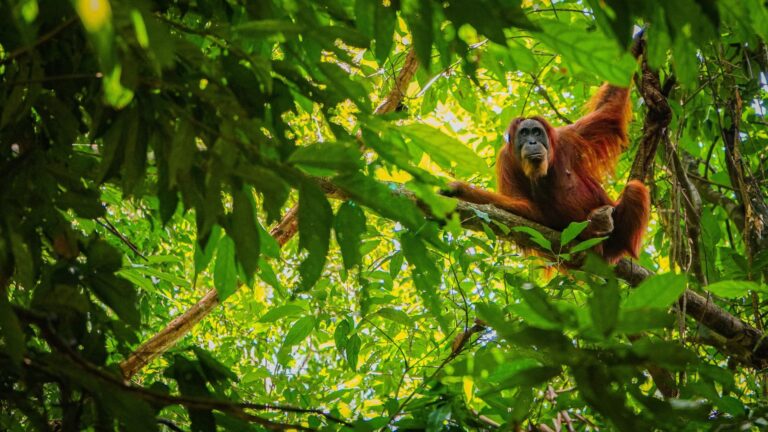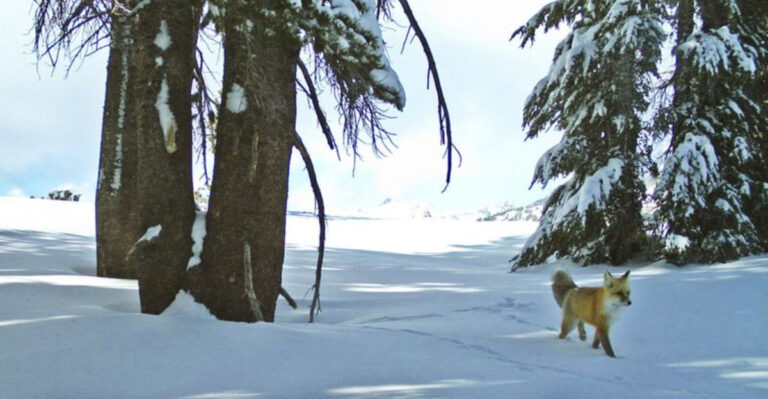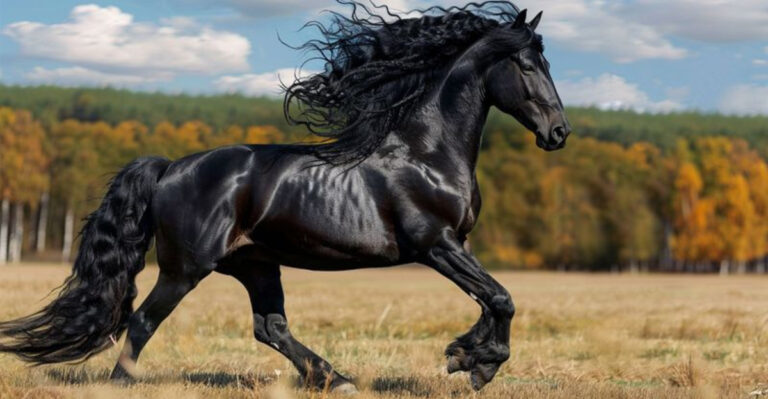All The Snakes You Can Encounter In The Arkansas River

The Arkansas River winds through multiple states, creating diverse habitats perfect for various snake species.
Whether you’re fishing, kayaking, or hiking nearby trails, knowing which slithery neighbors you might encounter is both fascinating and essential for safety. Let’s explore the ten snake species that call the Arkansas River region home.
1. Western Cottonmouth (Water Moccasin)
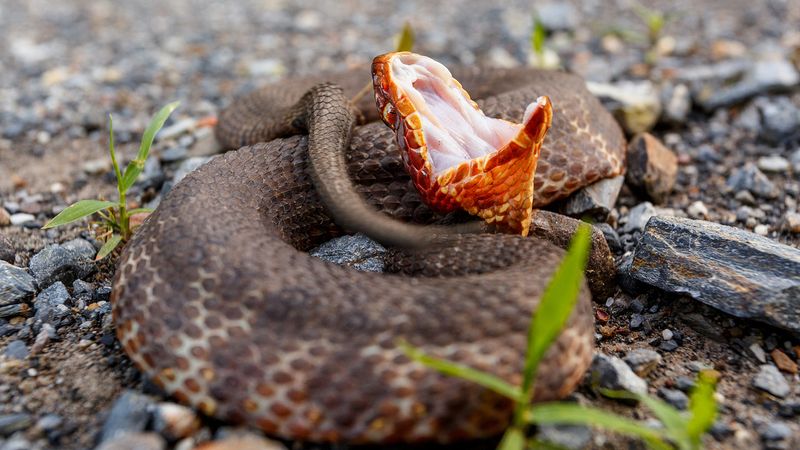
These chunky, venomous swimmers are instantly recognizable by their white mouth display when threatened. They lurk around shallow waters and marshy areas of the Arkansas River.
Cottonmouths primarily hunt fish, frogs, and small mammals. Unlike many water snakes, they float with their entire body visible on the water’s surface.
2. Northern Water Snake

Often mistaken for cottonmouths, these harmless reptiles have keeled scales giving them a rough appearance. Northern Water Snakes are excellent swimmers that patrol the river’s edge hunting for fish.
Their coloration ranges from brown to gray with darker blotches. When startled, they might flatten their bodies to appear more intimidating.
3. Eastern Garter Snake

Sporting distinctive yellow stripes running down their dark bodies, garter snakes are frequent riverside residents. They’re among the first snakes to emerge after winter, often seen basking on sun-warmed rocks near the water.
Despite being mildly venomous, their toxin is harmless to humans. These gentle creatures primarily feast on worms, amphibians, and small fish.
4. Western Diamondback Rattlesnake
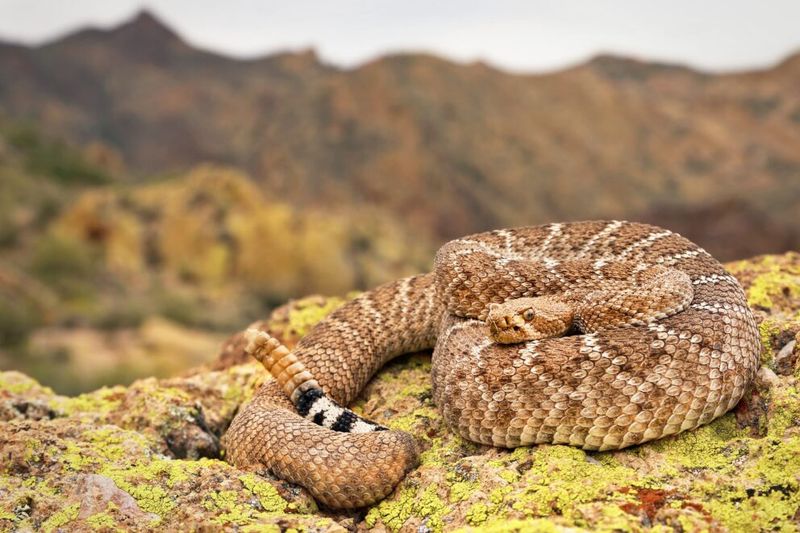
The signature buzz of a rattlesnake’s tail serves as nature’s warning system. Western Diamondbacks prefer the drier, rocky terrain near the Arkansas River’s upper regions.
Their diamond-patterned bodies provide perfect camouflage among rocks and brush. Highly venomous and potentially dangerous, these snakes deserve respectful distance when encountered in the wild.
5. Coachwhip Snake
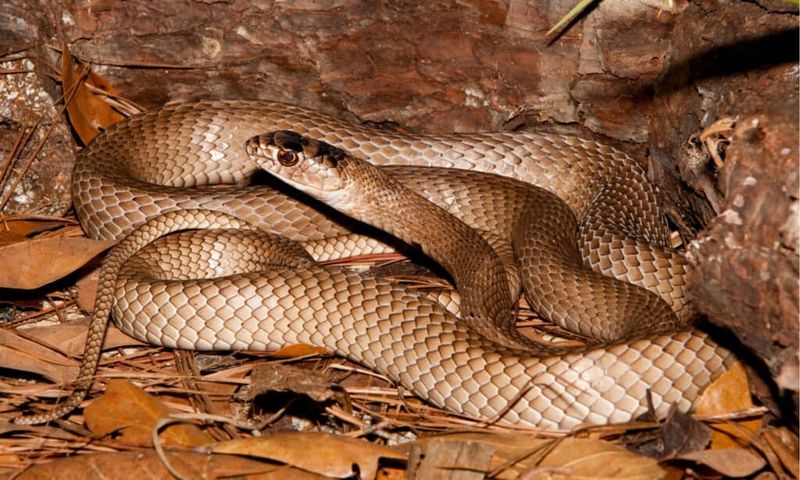
Named for their resemblance to braided leather whips, these lightning-fast hunters can move at impressive speeds across open ground. Coachwhips are active daytime predators along the Arkansas River’s sunnier banks.
Their slender bodies gradually darken from head to tail. Surprisingly, these non-venomous snakes will stand their ground when cornered, sometimes raising their heads to observe potential threats.
6. Prairie Kingsnake
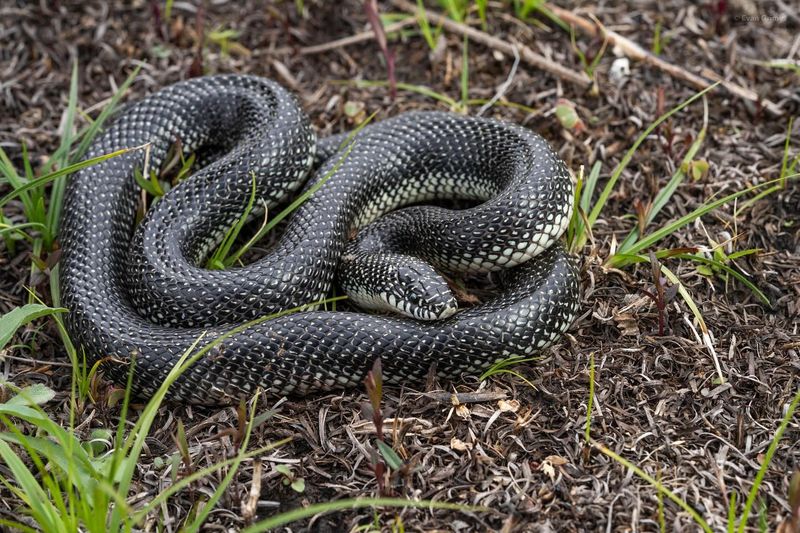
Farmers consider these speckled constrictors valuable allies against rodent populations. Prairie Kingsnakes frequent the grasslands and agricultural areas bordering the Arkansas River.
Their name comes from their habit of eating other snakes, including venomous species. The distinctive brown blotches on a lighter background make them relatively easy to identify compared to other local species.
7. Texas Rat Snake

Exceptional climbers, Texas Rat Snakes can scale trees and buildings with surprising agility. Their muscular bodies feature intricate patterns that vary from yellowish to dark brown or black.
Around the Arkansas River, they hunt birds, eggs, and mammals. Though non-venomous, they’re known for their defensive attitude when cornered, often vibrating their tails against leaves to mimic a rattlesnake.
8. Bull Snake

Among the largest snakes in the region, Bull Snakes can grow over six feet long. Their impressive size helps them tackle substantial prey, including prairie dogs and rabbits along the Arkansas River valley.
When threatened, they put on quite a show – hissing loudly, flattening their heads, and striking repeatedly. This dramatic behavior often convinces people they’ve encountered a rattlesnake instead of this harmless impostor.
9. Missouri Black Snake

Also known as Black Rat Snakes, these glossy-scaled reptiles are excellent tree climbers. Their shiny black bodies with hints of white between scales make them distinctive residents of the Arkansas River’s forested areas.
Young snakes look completely different from adults, featuring bold patterns that fade as they mature. Farmers appreciate their talent for controlling rodent populations in barns and outbuildings near the river.
10. Ringneck Snake
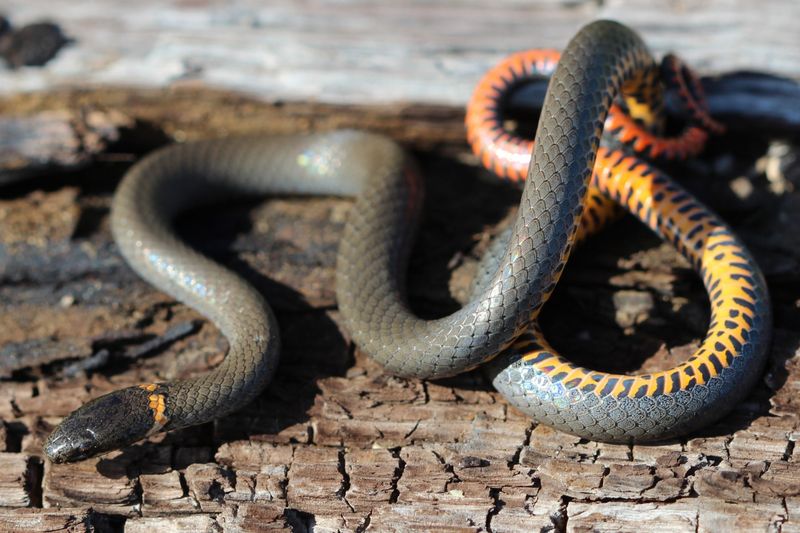
Tiny treasures of the forest floor, Ringneck Snakes rarely exceed 15 inches in length. Their dark bodies contrast beautifully with the vibrant yellow or orange ring around their necks.
These secretive creatures spend most of their time under logs and rocks near the Arkansas River’s damp woodlands. Though technically venomous, their mild toxin only affects their small prey – earthworms, salamanders, and tiny frogs.

